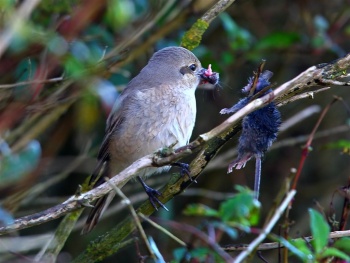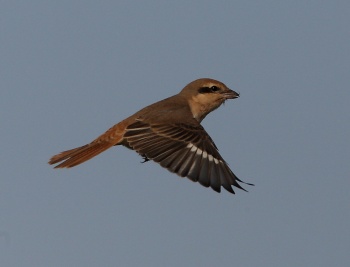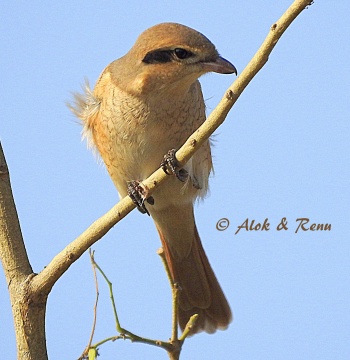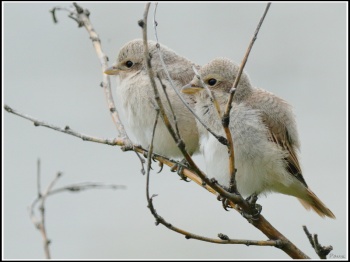- Lanius isabellinus
Includes Daurian Shrike
Alternative name: Rufous-tailed Shrike
Identification
17·5–18 cm (6¾-7 in)
- Sandy-grey upperparts
- Buffish-white underparts
- Long rufous tail
Similar Species
Red-tailed Shrike and juvenile Red-backed Shrike.
Distribution
Central Asia from eastern Kazakhstan and Afghanistan east to Mongolia and western China. Winters in the Sahel region of Africa, the Near East, east to northwestern India. Exact distribution not yet fully determined due to difficulty of separation from closely-related Red-tailed Shrike[1].
A regular autumn vagrant to northwestern Europe.
Taxonomy
Red-tailed Shrike L. phoenicuroides was formerly considered conspecific, the two together then sometimes under the alternative name Rufous-tailed Shrike. Also, even earlier (mid to late 20th century), often considered a subspecies of Red-backed Shrike.
Subspecies
There are 3 subspecies[2]:
- L. i. isabellinus (Daurian Shrike):
- L. i. arenarius:
- L. i. tsaidamensis:
- North-central China (Qinghai); wintering grounds unknown
Owing to past confusion over the subspecific allocation of the type specimen, L. i. arenarius was formerly known as L. i. isabellinus, while L. i. isabellinus was formerly known as L. i. speculigerus[3].
Habitat
Desert oases, thorn forests, and other scrubby, shrub and woodlands. Also on farmland.
Behaviour
Action
It hunts from a low, exposed perch from which it either glides and hovers to take its prey or drops directly onto it when the prey is below the perch.
Diet
Insects are caught in flight. The bird returns to its perch in order to eat or store its prey; it stores food on spikes (twigs, barbed wire, thorns) for later consumption. It impales small mammals before it consumes it and such prey is tackled by eating the head and limbs first.
Breeding
A nest of dry grass stems lined with soft grass is build and placed in a tree or bush. The 4-8, usually 5-6, eggs are laid late May – late June and are incubated by the female for 15-16 days, while the male feeds her. Both parents feed juveniles, which fledge at 13-14 days.
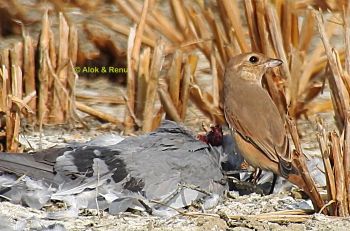
Photo © by Alok Tewari
District Gurugram, Haryana, India, 21 Dec 2021
References
- Worfolk, T. (2000). Identification of red-backed, isabelline and brown shrikes. Dutch Birding 22: 323-362.
- Clements, J. F., T. S. Schulenberg, M. J. Iliff, S. M. Billerman, T. A. Fredericks, B. L. Sullivan, and C. L. Wood. 2019. The eBird/Clements Checklist of Birds of the World: v2019. Downloaded from http://www.birds.cornell.edu/clementschecklist/download/
- Pearson, D. J. (2000). The races of the Isabelline Shrike Lanius isabellinus and their nomenclature. Bull. Brit. Orn. Club 120: 22-27.
- Collins Field Guide 5th Edition
- Collins Bird Guide ISBN 0 00 219728 6
- Birdforum Member observations
Recommended Citation
- BirdForum Opus contributors. (2025) Isabelline Shrike. In: BirdForum, the forum for wild birds and birding. Retrieved 25 April 2025 from https://www.birdforum.net/opus/Isabelline_Shrike
External Links
Search the Gallery for Isabelline Shrike videos:
GSearch checked for 2020 platform.1





